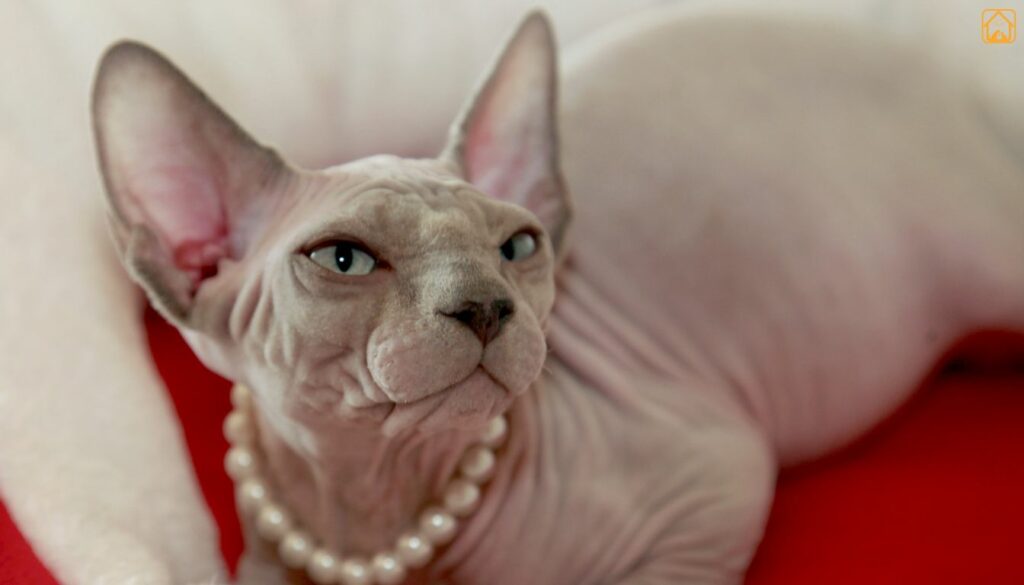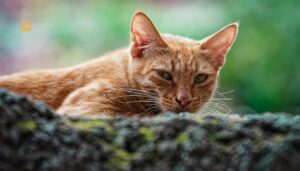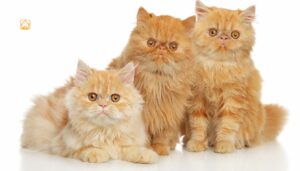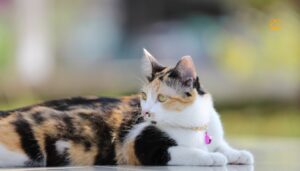What Are Hairless Cats? Origins and Genetic Background
Hairless cats aren’t just shaved versions of regular cats. They’re the result of rare genetic mutations that change the way their skin and hair grow. The most famous, the Sphynx cat, first appeared in the 1960s in Canada, thanks to natural variations in the TWIST gene. Other breeds, like the Donskoy and Peterbald cat, developed independently in Russia, each through distinct genetic lines, some dominant, some recessive.
These mutations can produce a range of hairlessness. Some cats are totally bald, while others have a peach-fuzz layer or tufts on their ears, nose, or tail. Over time, breeders paired these unique cats with others, like the Munchkin, Scottish Fold, and American Curl, to create new hairless hybrids such as Bambino, Dwelf, Elf, and Ukrainian Levkoy cats.
So, are hairless cats natural? In a sense, yes, their hairlessness started with spontaneous genetic character, then careful breeding made those traits stick around. It’s a wild mix of nature and nurture.
Types of Hairless Cats: Breeds and Hybrids Explained
Hairless cats come in a variety of breeds and unique hybrids, each with their own charm and character. From completely bald to lightly fuzzy, these cats offer a look and personality like no other.
Popular Hairless Cat Breeds
Sphynx Cat
The Sphynx is the most well-known of all hairless cat breeds. It’s famous for its smooth, wrinkled skin, oversized ears, and outgoing personality. These cats love attention, cuddles, and often act like little clowns around the house. Some have a light fuzzy layer, while others are completely bald. Despite their lack of fur, they’re warm to the touch and adore cozy blankets.
Donskoy Cat
Also called the Don Sphynx or Russian Hairless, the Donskoy has a dominant gene that causes baldness. Some can grow a light coat in winter, which they shed when it gets warm. They’re affectionate, intelligent, and often very loyal to their owners. These cats enjoy social interaction and do well in active homes. Their skin needs regular care to stay healthy.
Peterbald Cat
The Peterbald is an elegant breed that can range from completely bald to having a fine, fuzzy coat. It’s a mix between the Donskoy and Oriental Shorthair. These cats are sleek, affectionate, and love following their people around. Their slim bodies and graceful movements make them look like little feline dancers. Peterbalds are gentle and social with both humans and other pets.
Bambino Cat
The Bambino is a mix of the Sphynx and Munchkin breeds. It’s a small cat with short legs and a big personality. Despite their tiny stature, Bambinos are active, playful, and full of curiosity. They’re known for being affectionate lap cats. Their wrinkly skin needs regular cleaning, and they enjoy warm spots and cuddly clothes in colder weather.
Dwelf Cat
Dwelf cats are truly one of the most unique hairless cat breeds. They combine the genes of the Sphynx, American Curl, and Munchkin. The result? A tiny cat with short legs, curled ears, and nearly no hair. Dwelfs are energetic, quirky, and love human companionship. Their unusual looks turn heads, but it’s their sweet nature that wins hearts.
Elf Cat
The Elf cat is a larger, muscular breed created by mixing the Sphynx and American Curl. They’re completely or mostly hairless with soft, peachy skin and curled ears. Elves are playful, intelligent, and deeply affectionate. They love being part of family activities and get along well with kids and other pets. Their bold looks come with a soft, loving personality.
Minskin Cat
Minskin cats are a mix of Sphynx and Munchkin, just like Bambinos, but often even smaller. They have sparse fur on the face, ears, tail, and legs, while the rest of their body is mostly bald. Minskins are outgoing, friendly, and love to explore. Despite their small size, they have big energy and a bigger heart. They do great in apartments or smaller spaces.
Ukrainian Levkoy Cat
The Ukrainian Levkoy stands out with its folded, inward-bending ears and slender body. It’s a mix of Donskoy and Scottish Fold, giving it a very distinctive look. These cats are affectionate, intelligent, and often form strong bonds with their owners. They’re social, curious, and like gentle interaction. Their skin is delicate, so they need careful grooming and sun protection.
Lykoi Cat
Nicknamed the “werewolf cat,” the Lykoi isn’t always fully hairless but often has a patchy, uneven coat. They’re usually black or gray and have a wild, mysterious look. Their personality is quite the opposite—they’re friendly, loyal, and playful. Lykoi cats love to hunt toys and explore every corner of the house. They’re one of the most unusual-looking cats, with tons of charm.
Other Hairless Breeds & Hybrids
- Elf Cat: A cross between the Sphynx and American Curl, with curled ears and a muscular build. Gentle, loving, and quite rare.
- Minskin: Another short-legged breed, with hairless bellies and fuzzy “points” on the nose, ears, and tail. Minskins are social, playful, and love new experiences.
Comparing Popular Hairless Breeds: Sphynx, Bambino, Donskoy, Peterbald, and More
This quick comparison highlights key differences in looks, size, and personality among popular breeds like the Sphynx, Bambino, Donskoy, and Peterbald.
| Breed | Origin | Key Features | Lifespan | Personality |
| Sphynx | Canada | Wrinkled, suede skin, large ears | 8-14 years | Affectionate, playful, vocal |
| Bambino | USA | Short legs, hairless or fuzz, big eyes | Up to 12 years | Outgoing, cuddly, playful |
| Donskoy | Russia | Muscular, variable coat, almond eyes | 12-15 years | Smart, loyal, curious |
| Peterbald | Russia | Sleek, variable coat, long limbs | Up to 15 years | Social, gentle, dog-like |
| Ukrainian Levkoy | Ukraine | Folded ears, wedge face, patchy coat | ~12 years | Friendly, calm, quiet |
If you want a high-energy, interactive buddy, the Sphynx or Peterbald might fit. Looking for something smaller and even more unique? The bambino cat or bambino dwelf cat are show-stoppers. For those drawn to the unusual, the lykoi cat brings a wild, werewolf-like look.
Sphynx Hybrids and Unique Varieties
- Sphynx Hybrids: Breeders keep experimenting, like the Sphynxiebob, a cross with the American Bobtail, resulting in a bobbed tail and hairless body.
- Fat Hairless Cats and Hairless Bully Cats: While not breeds, these terms pop up for larger or stockier hairless cats, often Sphynx mixes with extra personality.
- Hairless Black Cats and Hairless Baby Cats: Refers to color or age, not breed, but black-skinned or young hairless kittens are striking and sought after.
| Breed | Origin | Main Traits |
| Sphynx | Canada | Wrinkled, outgoing, bald/peach fuzz |
| Donskoy | Russia | Muscular, dominant hairless gene |
| Peterbald | Russia | Sleek, elegant, variable coat |
| Bambino | USA | Short legs, playful, tiny size |
Unique Physical Traits of Hairless Cats
Hairless cats aren’t just missing fur, their whole look is different. Most have wrinkly, elastic skin that feels like warm suede or soft rubber. Big, bat-like ears are common, and many have expressive eyes that seem to see right through you. Some breeds like the Dwelf or Elf cat have curled or folded ears, while Ukrainian Levkoys have ears that bend inward.
Do hairless cats have whiskers? Some have short, curly, or even missing whiskers. And if you’ve ever seen a hairless cat with extra rolls or a chubby belly, don’t worry, it’s totally normal for them to look a little “fat” compared to their furrier friends. It’s just skin on display.
Personality and Temperament: What to Expect
If you want a cat that acts more like a dog, hairless cats might be your match. Sphynx cats and their cousins are famously social, outgoing, and love attention. They’ll greet you at the door, follow you from room to room, and even talk with little chirps and meows.
I remember visiting a friend with a Peterbald hairless cat, he hopped right into my lap and demanded head scratches like we’d known each other forever. These cats hate being alone, and many will snuggle under blankets or curl up on your lap just for warmth and love.
Hairless Cat Care: Skin, Bathing, & Grooming Needs
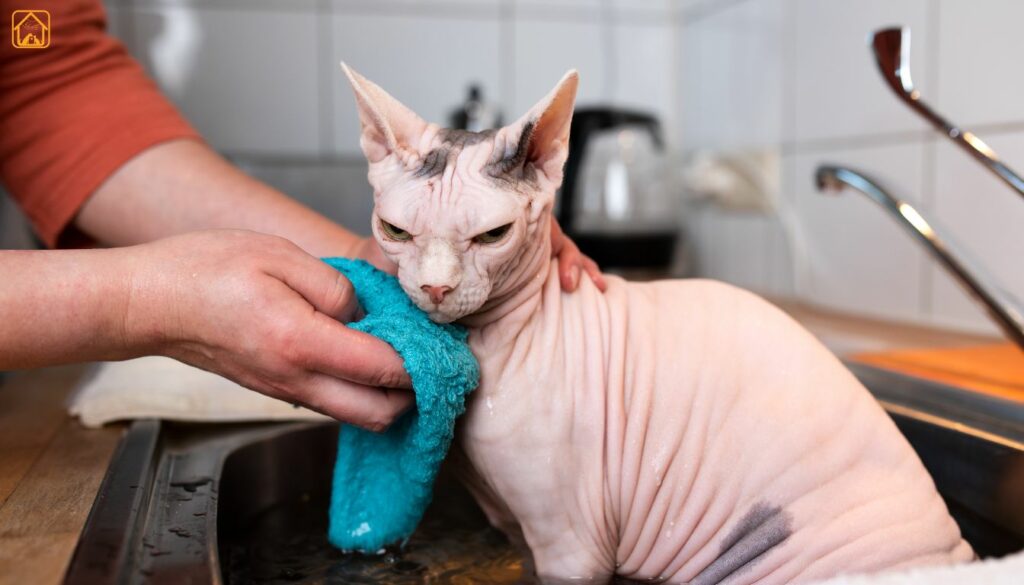
Skin Care and Bathing Routines
No fur means no shedding, but it also means more skin care. Hairless cats get oily fast since their skin isn’t protected by a thick coat. Expect to give your cat a gentle bath about once a week using a hypoallergenic cat shampoo. Skipping baths can lead to clogged pores, acne, or even skin infections.
After each bath, make sure your cat is completely dry and warm. These cats hate being cold.
Protecting from Cold and Sun
- Use soft sweaters or heated beds during chilly months.
- Let them nap in sunny windows, but use cat-safe sunscreen if they’re in direct sunlight for long.
- Watch out for sunburn and overheating in summer, hairless cats feel temperature changes much more than furred breeds.
Other Grooming Tips
- Wipe between skin folds to prevent irritation.
- Check ears weekly, hairless cats can build up more wax.
- Trim nails and keep bedding clean to avoid skin problems.
Honestly, keeping a hairless cat clean is a bit more work, but the cuddles are worth every minute.
Health Concerns and Lifespan of Hairless Breeds
Hairless cats are generally healthy, but they have some special needs.Regular vet check-ups, a high-quality diet, and careful skin care.
Skin Conditions
The most common issues are skin-related. Without fur, hairless cats are prone to pimples (cat acne), blackheads, yeast or bacterial infections, and rashes. Areas with deep wrinkles need extra attention, since trapped dirt can cause irritation. If your cat develops red spots, persistent itching, or unusual bumps, see your vet. Regular, gentle cleaning is your first line of defense.
Temperature Regulation
Hairless cats can’t insulate themselves like other cats. They get cold easily in winter and overheat in summer. In cold weather, watch for shivering, lethargy, or seeking out heat sources. In hot weather, look out for panting or restless behavior. Cozy beds, sweaters, and a draft-free home help in winter. In summer, keep them out of direct sunlight, offer cool spots, and use fans or air conditioning if needed.
Sunburn & Skin Cancer
Yes, hairless cats can get sunburned! Even a quick nap in a sunny window can cause burns. Long-term sun exposure can lead to skin cancer. Always use cat-safe sunscreen or keep your cat in shaded areas.
Heart Disease
Certain breeds, especially the Sphynx, can be prone to hypertrophic cardiomyopathy (HCM), a form of heart disease. Regular vet checkups and early screening are vital, especially if your breeder or rescue recommends it. Ask your vet about annual heart ultrasounds or screenings if you have a Sphynx or related breed.
Dental Issues
Some hairless breeds, like the Ukrainian Levkoy or Peterbald, may be predisposed to dental problems. Routine dental care and yearly dental exams are a must.
Allergies & Sensitivities
Ironically, while many people seek hairless cats because of allergies, these cats can themselves have sensitive skin or develop allergies to detergents, fabrics, or food. Stick to gentle, unscented cleaning products and monitor for any signs of skin irritation.
Are Hairless Cats Hypoallergenic? Myths vs. Facts
Are hairless cats hypoallergenic? It’s a common hope, but not the whole truth. While they don’t shed fur, hairless cats still produce the same skin oils and saliva proteins (like Fel d 1) that cause allergies.
Some people with mild allergies find hairless cats easier to live with because there’s less dander floating around. But for many, symptoms still happen. Regular baths and cleaning can help, but there’s no truly allergen-free cat, hairless or not.
Choosing and Adopting a Hairless Cat: Costs, Breeders, and Considerations
Thinking about bringing home a hairless cat? Prepare for a bit of shock as purebred Sphynx, Peterbald, or Bambino cats often cost ₹20K to ₹50K, sometimes more. Reputable breeders should provide health guarantees and proof of genetic testing. Avoid breeders who won’t answer your questions or show you their cats’ living conditions.
Don’t forget, hairless cats show up in rescues, too! Adoption fees are lower and you’ll give a special cat a loving home. Before deciding, consider your ability to provide regular care, vet visits, and lots of snuggles, these cats need both warmth and attention.
FAQs About Hairless Cats
What are hairless cats called?
Hairless cats include breeds like Sphynx, Donskoy, Peterbald, Bambino, Minskin, and hybrids like Elf and Dwelf cats. Each has its own unique look and personality.
Do hairless cats have whiskers?
Some do, but many have short, curly, or missing whiskers and eyebrows. This is normal and part of their unique charm.
Are hairless cats natural?
The first hairless cats appeared from natural genetic mutations. Most modern breeds were developed by purposeful breeding to preserve and enhance those traits.
Are hairless cats hypoallergenic?
No cat is truly hypoallergenic. Hairless cats shed less fur, but still produce skin oils and saliva that can trigger allergies.
How long do hairless cats live?
Most hairless cat breeds live 8 to 15 years, with some reaching up to 20 with proper care and regular veterinary checkups.
How do I care for a hairless cat’s skin?
Weekly baths with gentle, cat-safe shampoo, wiping skin folds, and protecting them from sun and cold are key parts of hairless cat care.
Can I adopt a hairless cat from a shelter?
Yes! While rare, hairless cats and kittens (including Sphynx mixes) sometimes end up in rescues and shelters. Check breed-specific rescues or ask your local shelter to keep you in mind.
